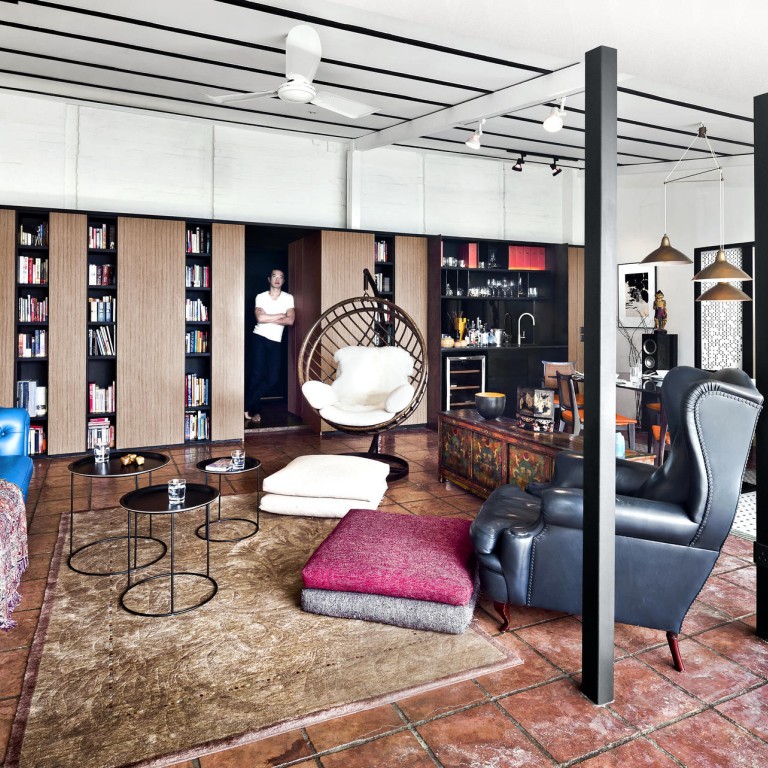
Natural habitat
The jungle had to be tamed in the restoration of a house that now recalls Singapore's black and white colonial structures
Text
"Seaview house; 2,000 sq ft with 3,000 sq ft garden; must love nature. Call me." That advert caught the eye of Jason Sambanju last year while he was leafing through the . On the cusp of signing a lease for a different property, also on Hong Kong Island, he was nevertheless intrigued.
Soon after, Sambanju, an Indonesian-born financier, agreed to meet the landlord at the house, which was unlike anything he had seen in his 13 years of living in Hong Kong.
"It had a jungle-meets-beach aesthetic," Sambanju says. "And it was a complete mess."
More to the point, the three-bedroom, two-bathroom house, in a relatively isolated location, felt like it was being overrun by the forest. Clad in bamboo, it had become a hive of insect activity, termites included, and like a worrisome growth against a vital organ, a large tree was pressing against a side wall. But, Sambanju says, "I saw what I could do with the place. So I threw a cheque at [the landlord]."
In return for a long lease, Sambanju pledged to renovate the house at his own expense. But to realise his vision, he had to enlist designer Jerome Lee, of Locus Associates. Lee was well aware of Sambanju's own design pedigree (his father, mother, sister and aunt are all architects), which is why he asked, only partially in jest, "Why don't you get your family to design the place?"
Between the two of them, however, the once-ramshackle residence has blossomed into a Hong Kong version of the black-and-white colonial houses much coveted in Lee's native Singapore, albeit one that evinces a certain serendipity and Sambanju's exuberant flourishes.
"It's got the black and white but also a throwback aesthetic," says Sambanju, who introduced retro touches and turquoise into what is otherwise a muted palette.
"The colonial thing works because it harks back to the past," says Lee, joking, "It's more raw out here in the [Malay for 'village']. The whole idea was that it [wouldn't be] so urban and not so clean, cookie-cutter or bling."
To make the most of the greenery and sea view, the front facade is now completely open, allowing light and air through what was once a dark, dank interior lit only by small openings. More illumination comes through a narrow skylight overhead and a glass-walled corner. By day it serves as a bright reading spot; by night it becomes a cosy television nook.
Up a short flight of steps from the private sitting area is an open bedroom and en-suite bathroom. A separate washroom inhabits the back of the house on the ground floor, where it is flanked by a guest room and a study, complete with its own porch.
Quirky touches abound, including retro mosaic tiles used to define the dining area.
"They're [reminiscent of] Hong Kong public toilets of the 60s and 70s," says Lee, laughing.
Then there are two photographs of Smokey Mountain, a large landfill in the Philippines, that have special resonance and not just because bits of plastic rubbish, which are part of the composition, repeat the hues of the turquoise sofa beneath them. The area out front, says Lee, "was like a dump site".
As if to register approval of the rubbish ground that has become a beautiful lawn, one of two resident cats strolls into the living area, diverting the conversation to the wildlife inhabiting the forest beyond.
"At night you have frogs and cicadas," says Sambanju. "There's a family of hawks over there. There are these beautiful spiders that come out and sweep up all the mosquitoes. I can have these doors open all year."
"Must love nature" obviously struck a chord.


Master bedroom An open master bedroom continues the black-and-white theme and affords views from the bed, which Sambanju has had for years. The walnut timber flooring (HK$1,350 per square metre) was installed by Sense Key Design.
En-suite bathroom The floor features retro mosaic tiles that were also used for the dining zone. To achieve the effect of the rough, textured wall, the old tiles were chiselled off to reveal the original brick wall. A waterproofing membrane was then applied to the rough surface and finished with matt-white waterresistant paint. The tap (HK$1,680) and Philippe Starck-designed basin for Duravit (HK$1,920) came from a shop that has since closed. The mirror cabinet and black granite vanity (HK$15,500 for both) were made by Sense Key Design.
Kitchen Accessed down a flight of stairs from the living area is the simple black-and-white kitchen. The cabinets (HK$102,000) were built by Sense Key Design.
Designer Jerome Lee wanted to inject a bit of Hong Kong into the interior design, which borrows from Singaporean black-and-white houses. So he came up with a laser-cut screen inspired by the cut-out motifs found in old Hong Kong gates and letter boxes. The screen (HK$6,500), made of spray-painted MDF board, was designed by Locus Associates and constructed by Sense Key Design.


